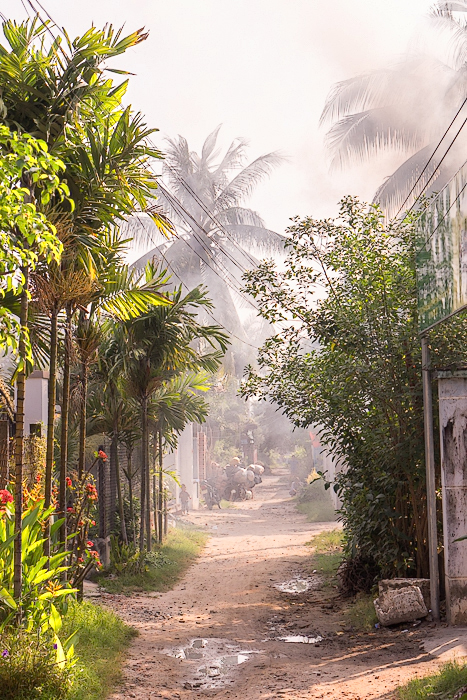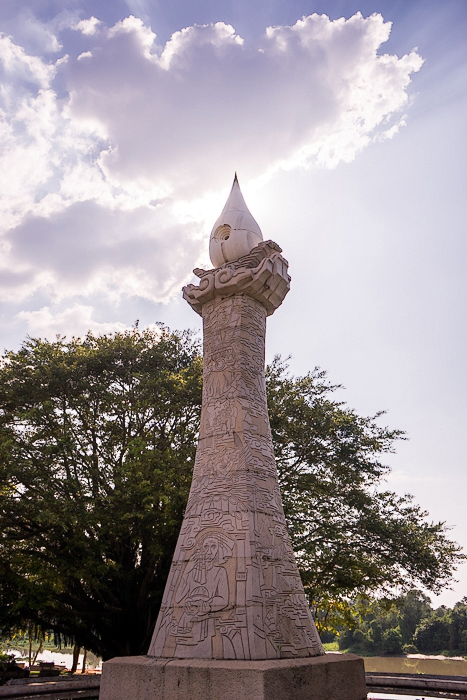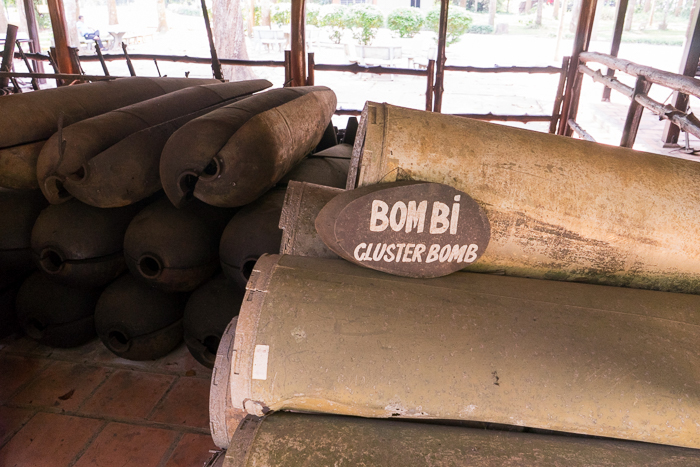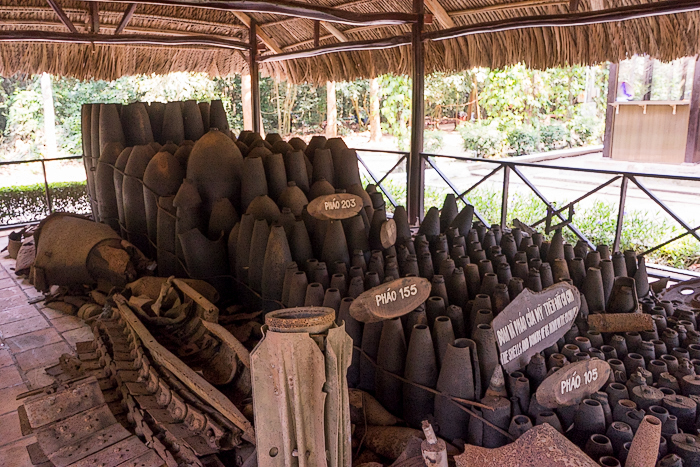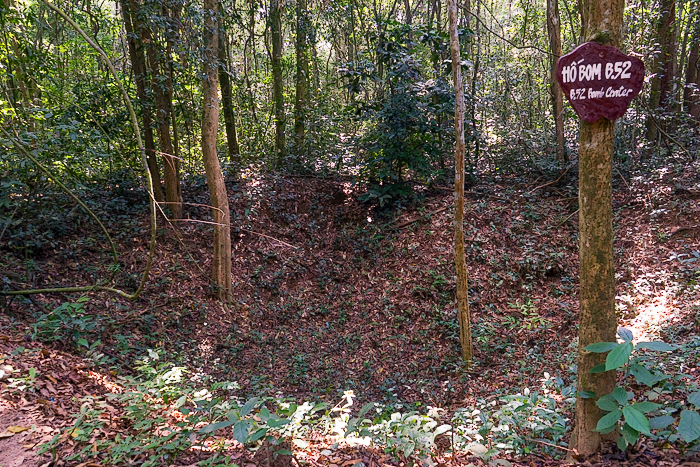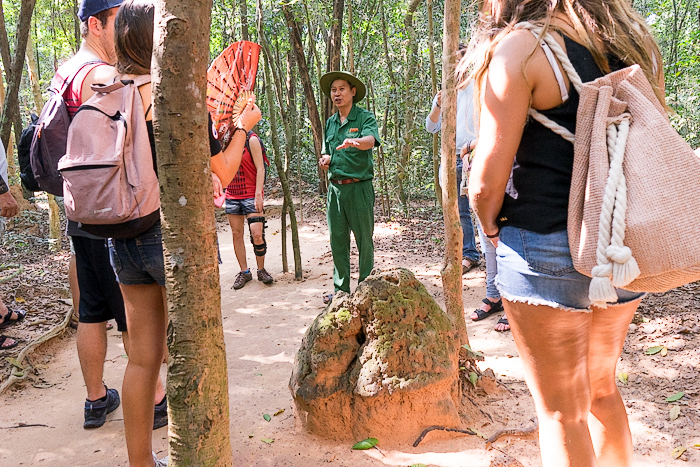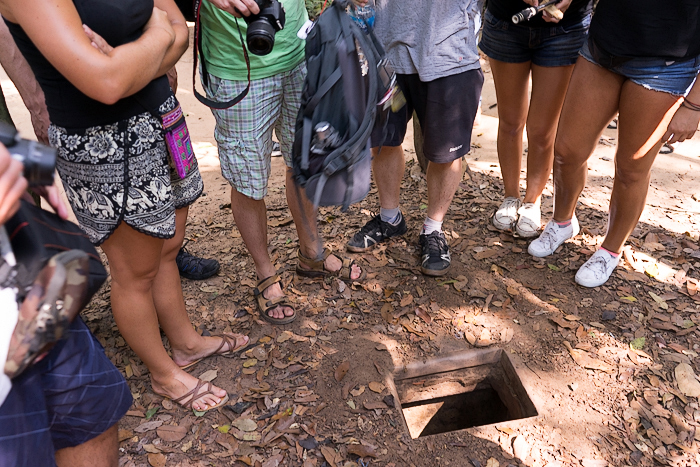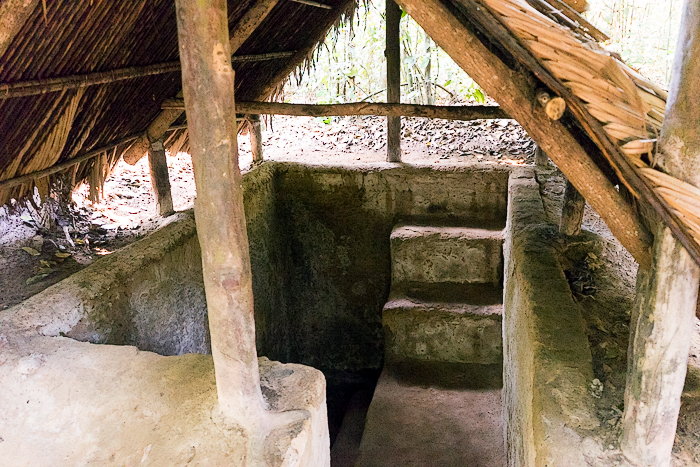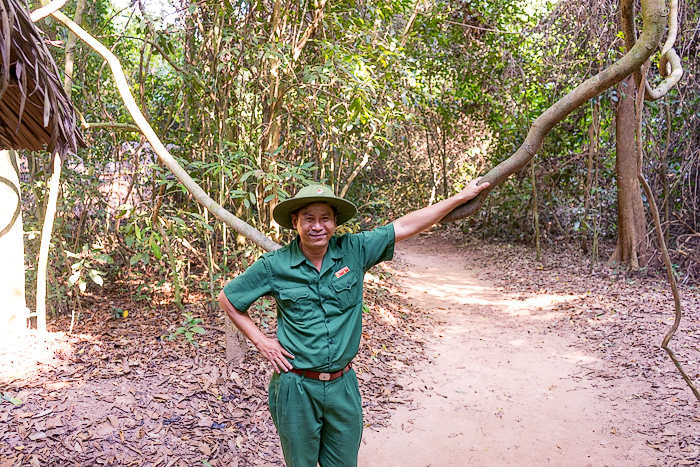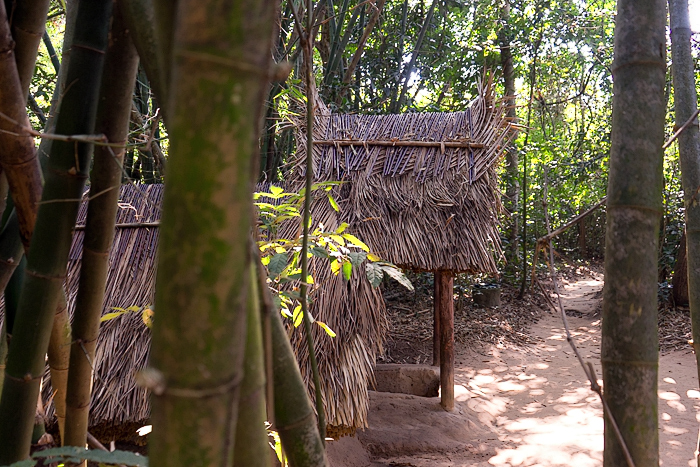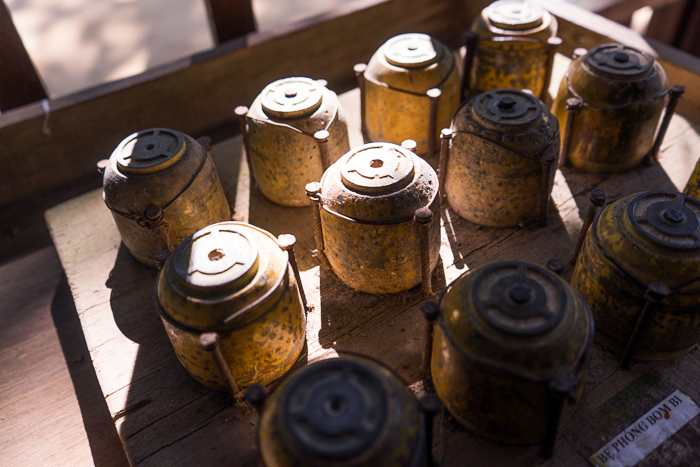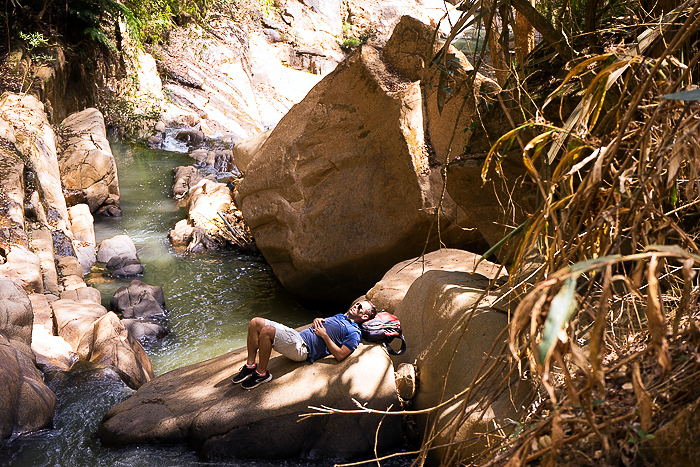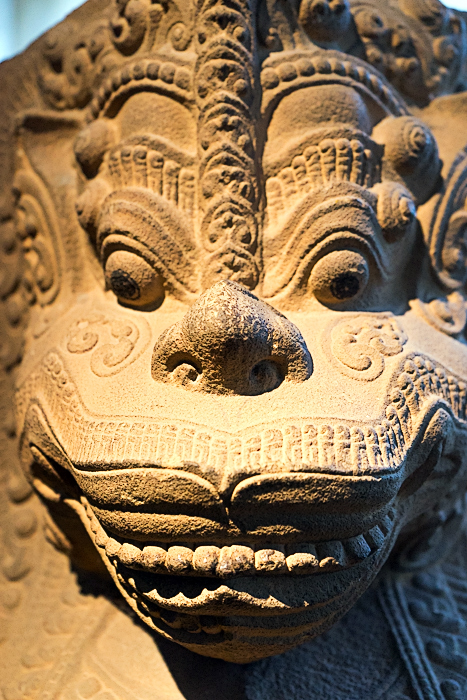The Cu Chi Tunnels
During the Vietnam War (fine: the “War of American Aggression”), the Viet Cong were hopelessly outmatched from a military standpoint. So, they had to level the playing field… or even better, dig tunnels and hide underneath the playing field. We went to Cu Chi to visit one of the most famous underground systems.
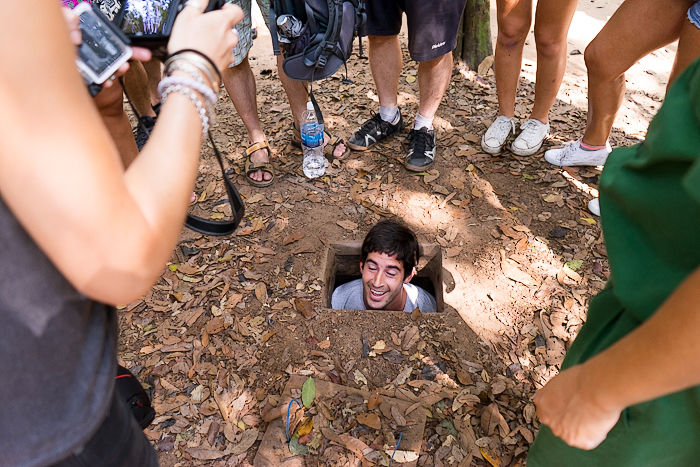
It’s impossible to overstate the importance of tunnels to the Viet Cong’s war effort. Entire battalions lived underground almost permanently, emerging only to replenish supplies or attack the enemy. The extensive Cu Chi network is estimated at a mind-boggling 75 miles, and included food halls, living quarters, and even hospitals, all semi-protected from American bombs.
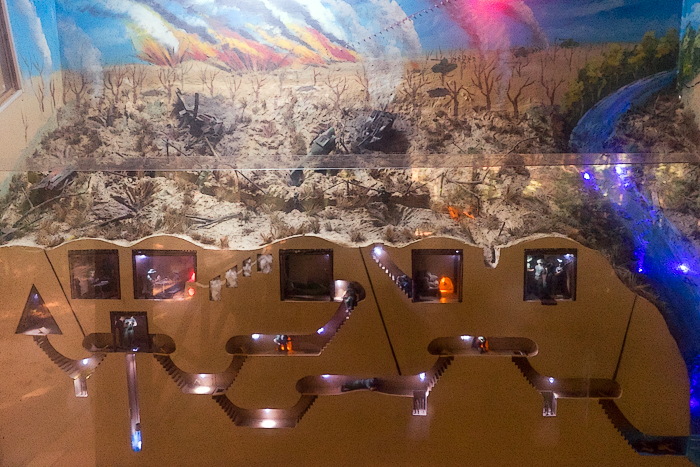
Not that life underground was a breeze. Soldiers had to deal with spiders, scorpions and snakes, as well as disease and the litany of conditions which come with… uh… living in dirt tunnels. And space was tight; one of the great benefits to the Viet Cong was that the larger American troops weren’t able to fit, especially since they tended to carry duffel bags full of weapons. And any enemy soldier who did try and find the tunnels would likely find themselves in a pit, impaled on bamboo spikes; the Viet Cong loved their booby-traps.
No, the better option was to bomb, and hope that the tunnels collapsed in on themselves. While walking through the jungle at Cu Chi, we saw some of the huge craters which were torn out of the earth by B-52 campaigns. Our guide explained that the tunnel systems were so intricate and deep, that while these bombs might collapse a room or section, there were always multiple avenues of escape available. The bombs, although powerful, were largely futile against the tunnels.
After a short walk, we arrived at the tunnels which have been made safe for tourists. The openings were completely obscured, hidden under leafs or otherwise disguised, and would have been almost impossible to detect, even if you had been carefully scouting for them. Even the ventilation ducts were disguised as termite mounds.
Our guide swept aside the brush, and opened a tiny hatch in the ground. Raising my arms above my head, I descended into the earth. The tunnels have been widened for tourists, but I still had to crawl. Jürgen opted out… and it was hard to blame him. Even our guide, who had been encouraging the group’s more fearful members, took one look at Jürgen’s 6’6″ frame and agreed that he should probably stay above ground.
This isn’t an experience for everyone. Larger people, anyone with mobility problems, or the claustrophobic should take a pass. That said, the tunnels weren’t as bad as I’d feared; yes, you’ll have to crawl, and the air is heavy and oppressive, but the sections which have been opened for tourists aren’t that long. You won’t be underground for any more than a few minutes at a time.
The experience of visiting Cu Chi is a little too touristy. There are almost always tons of visitors, so you’ll likely be in a big group, and the guides definitely rush you through. I couldn’t believe how fast we were in and out of the tunnels… and now enjoy our fabulous gift shop! But what was I going to do? Complain? “Hey, you built these tunnels to hide from my country’s bombs, and now you’re moving me along too quickly! So selfish!”
It’s amazing that we’re able to visit them at all. The war wasn’t even all that long ago, and yet here was our group — German, American, French and Vietnamese — all posing for fun pictures in front of these tunnels in which so many suffered and died. The speed with which humanity can heal is almost unbelievable.
Location: Cu Chi Tunnels
